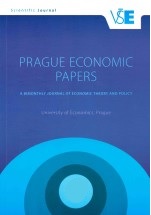Is a Model of Comprehensive Regionalism Trade-Increasing for V4 Countries? Sectoral Approach
Is a Model of Comprehensive Regionalism Trade-Increasing for V4 Countries? Sectoral Approach
Author(s): Iryna Gauger, Katarzyna ŚledziewskaSubject(s): Economy
Published by: Vysoká škola ekonomická v Praze
Keywords: EU effect; FTA effect; regionalism; sectoral trade; Visegrad
Summary/Abstract: This paper aims to identify the impact of a “deep” (economic union) and “shallow” (Common Commercial Policy) integration on 4 Visegrad countries’ trade with the EU and non-EU industrialized countries. Trade flows are analysed on the basis of sectors over the period of 1995–2011: the gravity model also utilizes sectoral value-added and sectoral output as proxies for the market size. The impact of regional trade agreements (RTAs) is evaluated for 17 WIOD sectors based on the research methodology developed by Baldwin (2006), Flam and Nordstrom (2003) and Fernandes (2006). Contrary to the mentioned research studies, this paper uses a more advanced econometric technique – the Poisson pseudo-maximum-likelihood method displayed in Silva and Tenreyro (2006). This paper concludes that both “deep” and “shallow” trade arrangements have a more pronounced effect on Visegrad high value-added product exports than on Visegrad low value-added product exports. Common Commercial Policy’s trade effects on RTAs, for instance in the case of Mexico and Turkey, are comparable to its trade effects with EU countries. The Common Commercial Policy’s effect on RTAs is almost absent in low-value-added product sectors of Visegrad countries. Thus, we conclude that integration with the EU influenced Visegrad countries’ trade of higher value-added goods with both the EU and non-EU industrialized countries.
Journal: Prague Economic Papers
- Issue Year: 27/2018
- Issue No: 1
- Page Range: 21-39
- Page Count: 19
- Language: English

